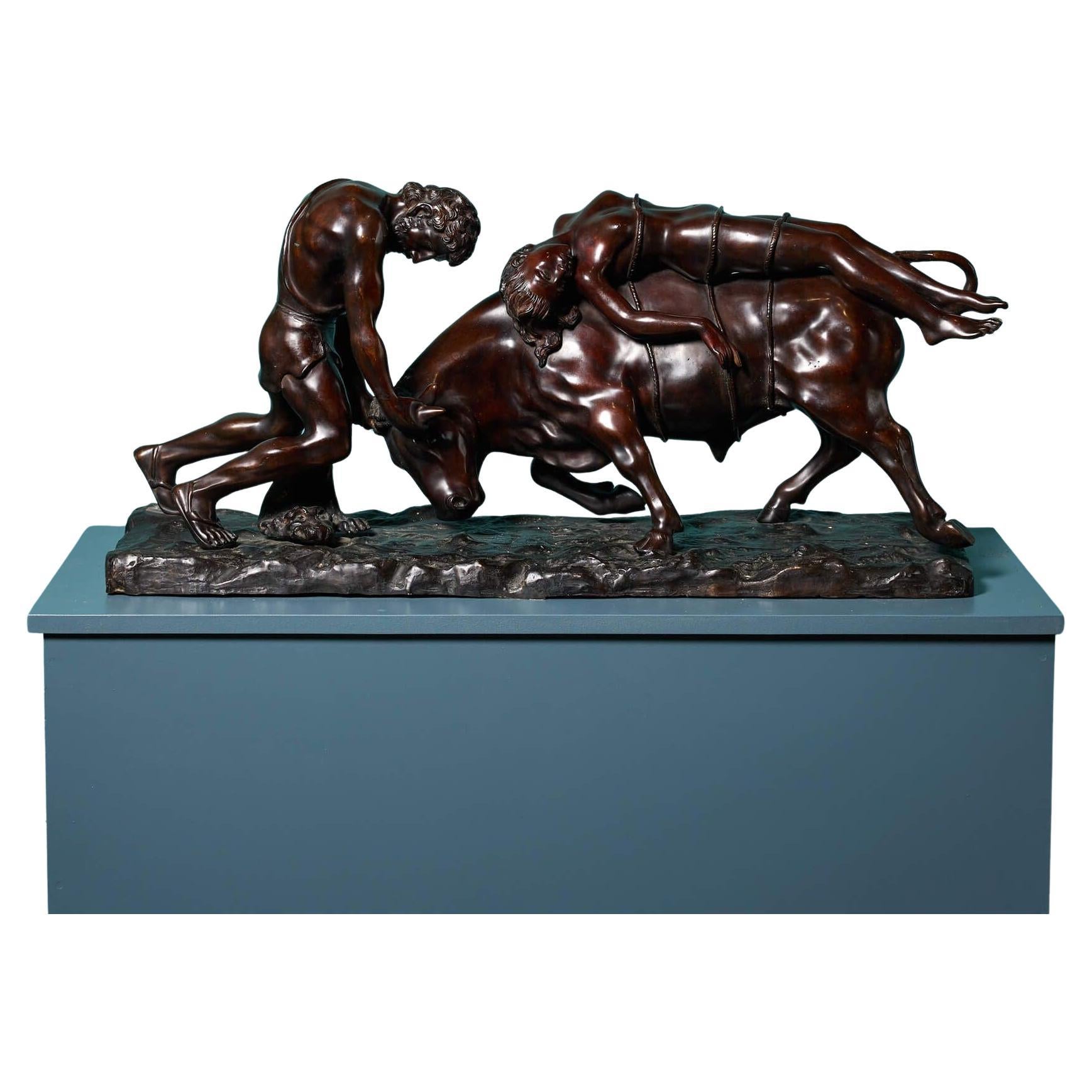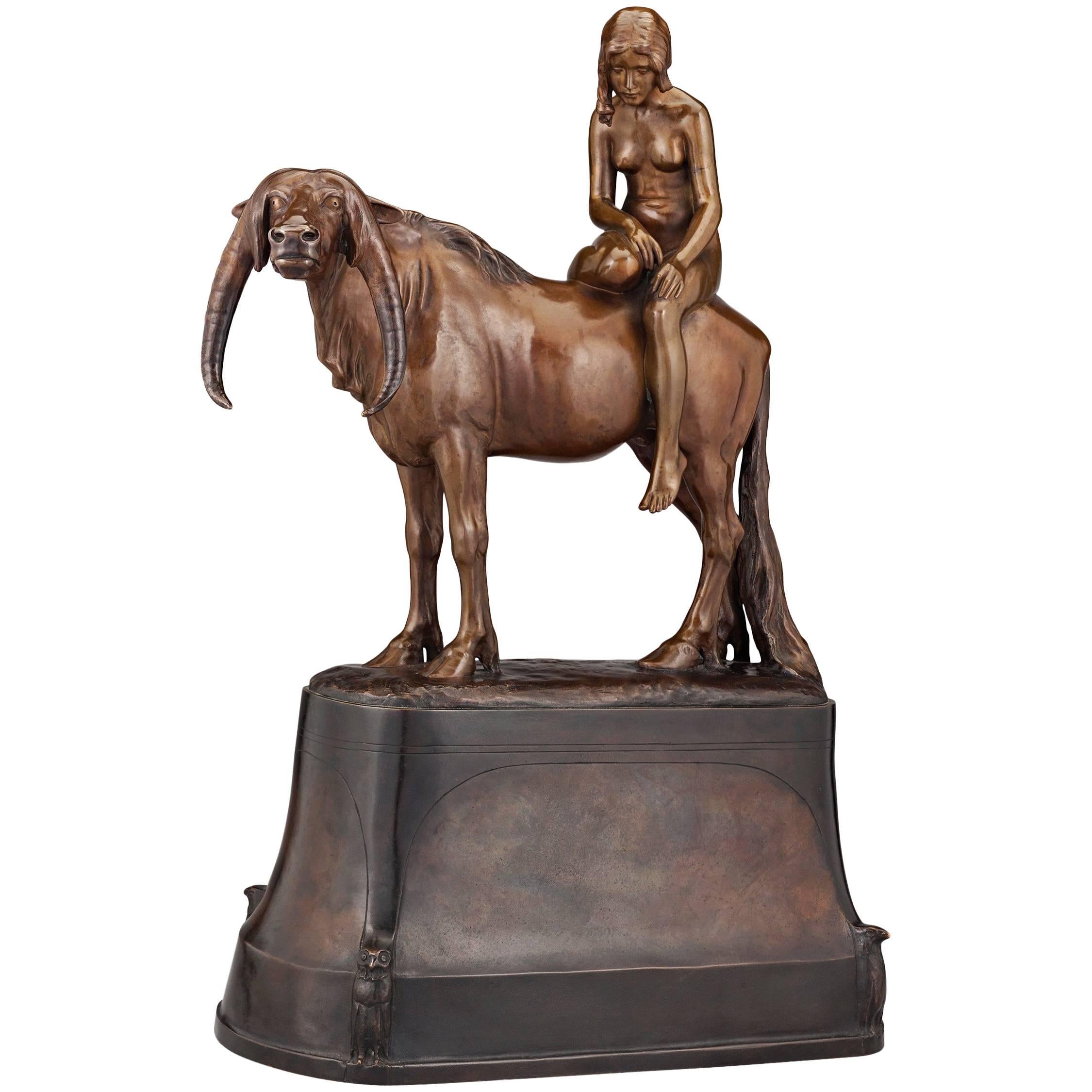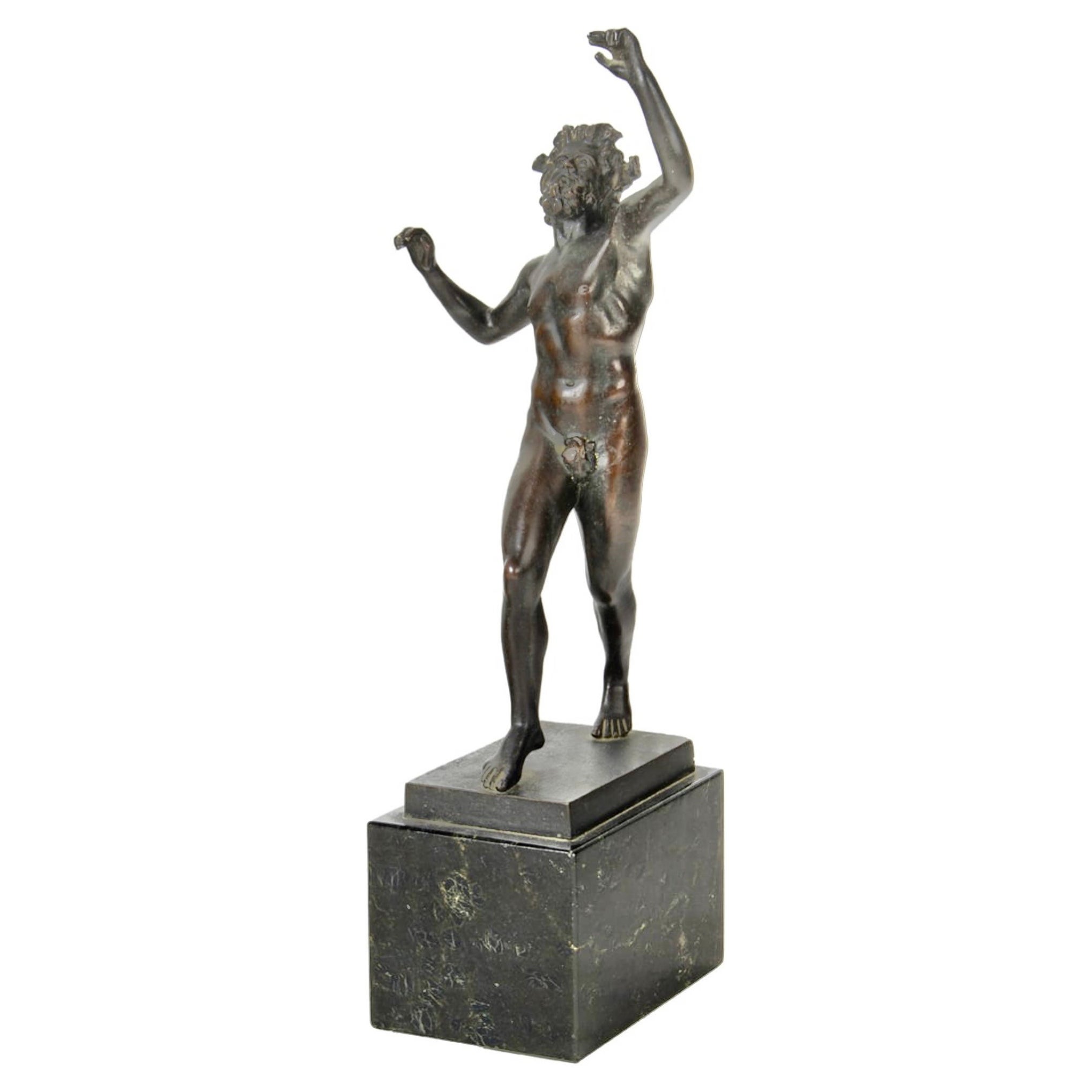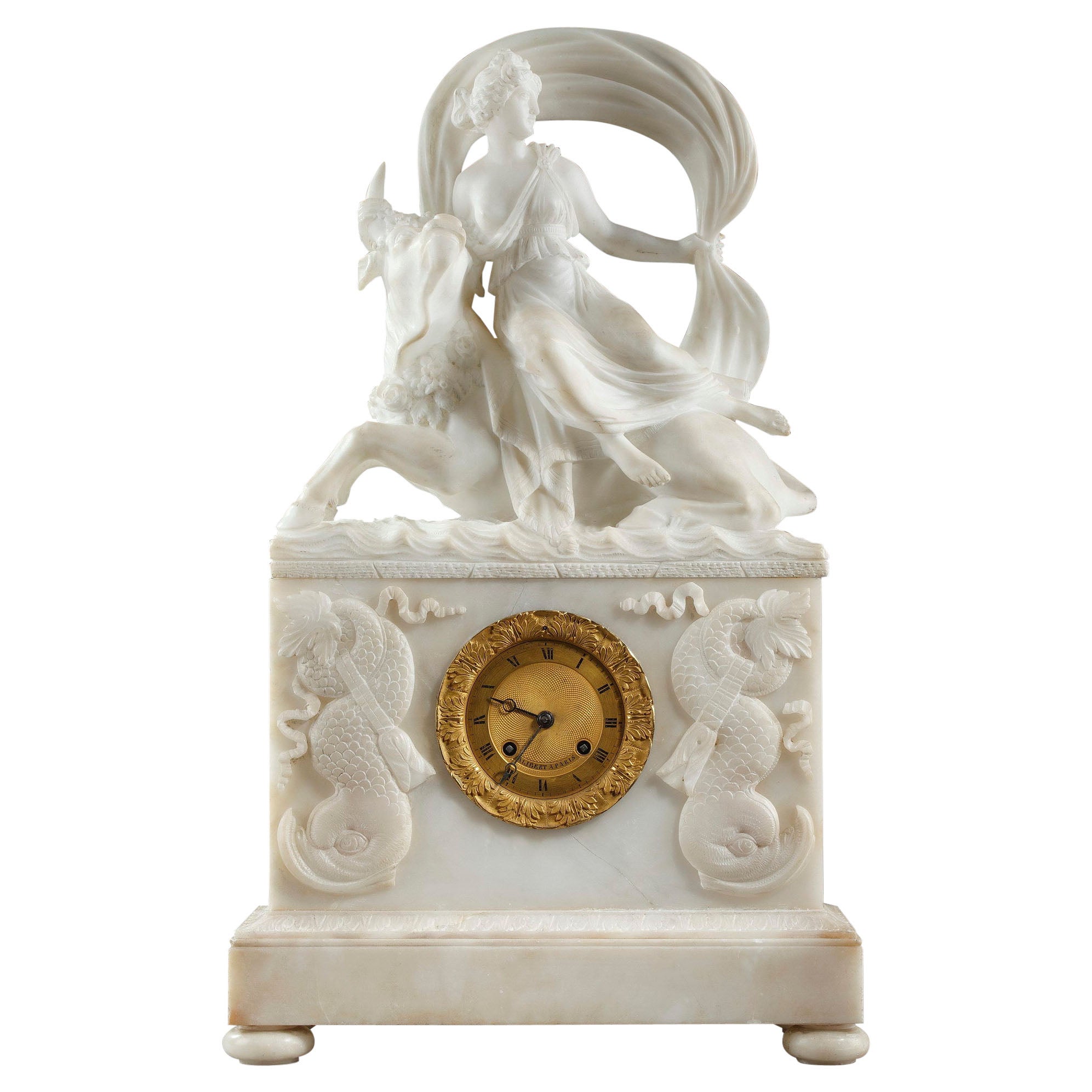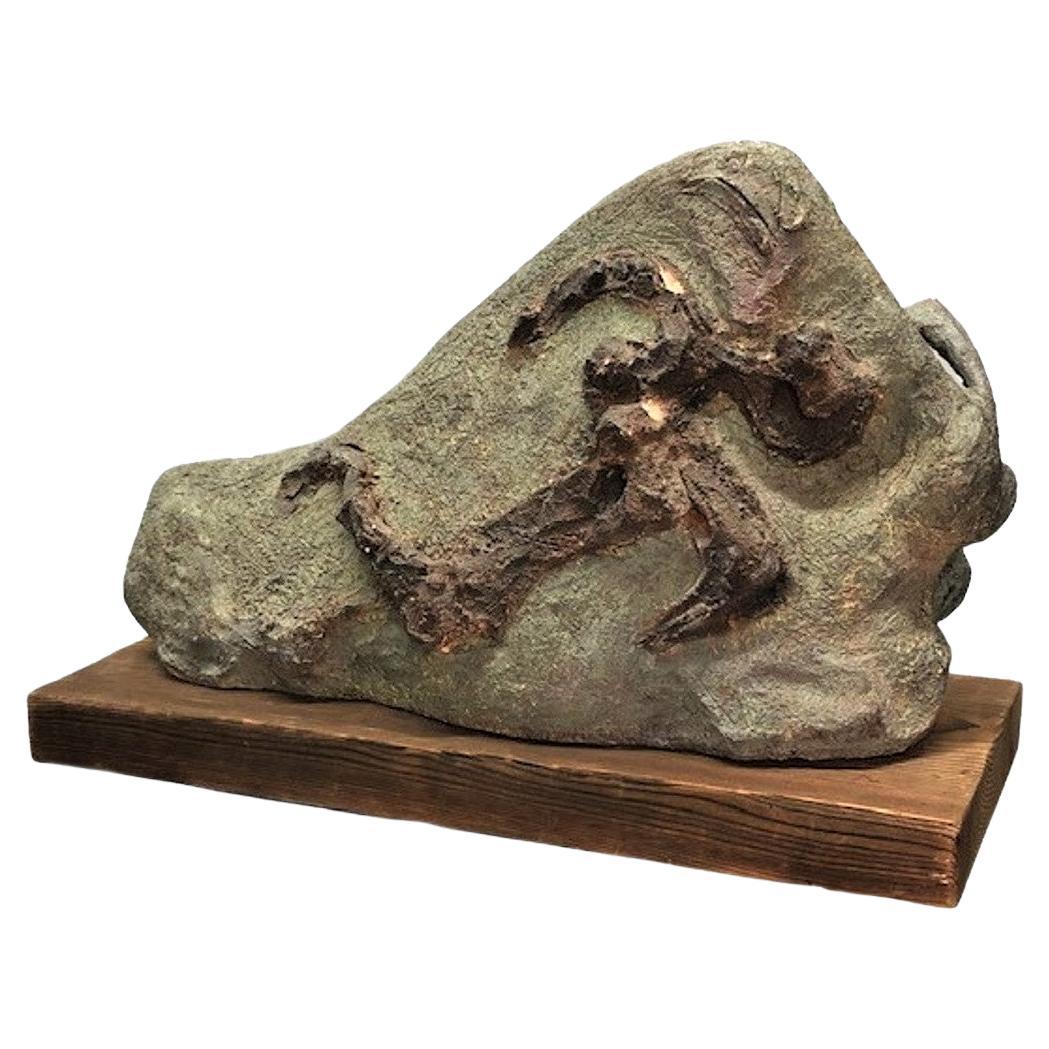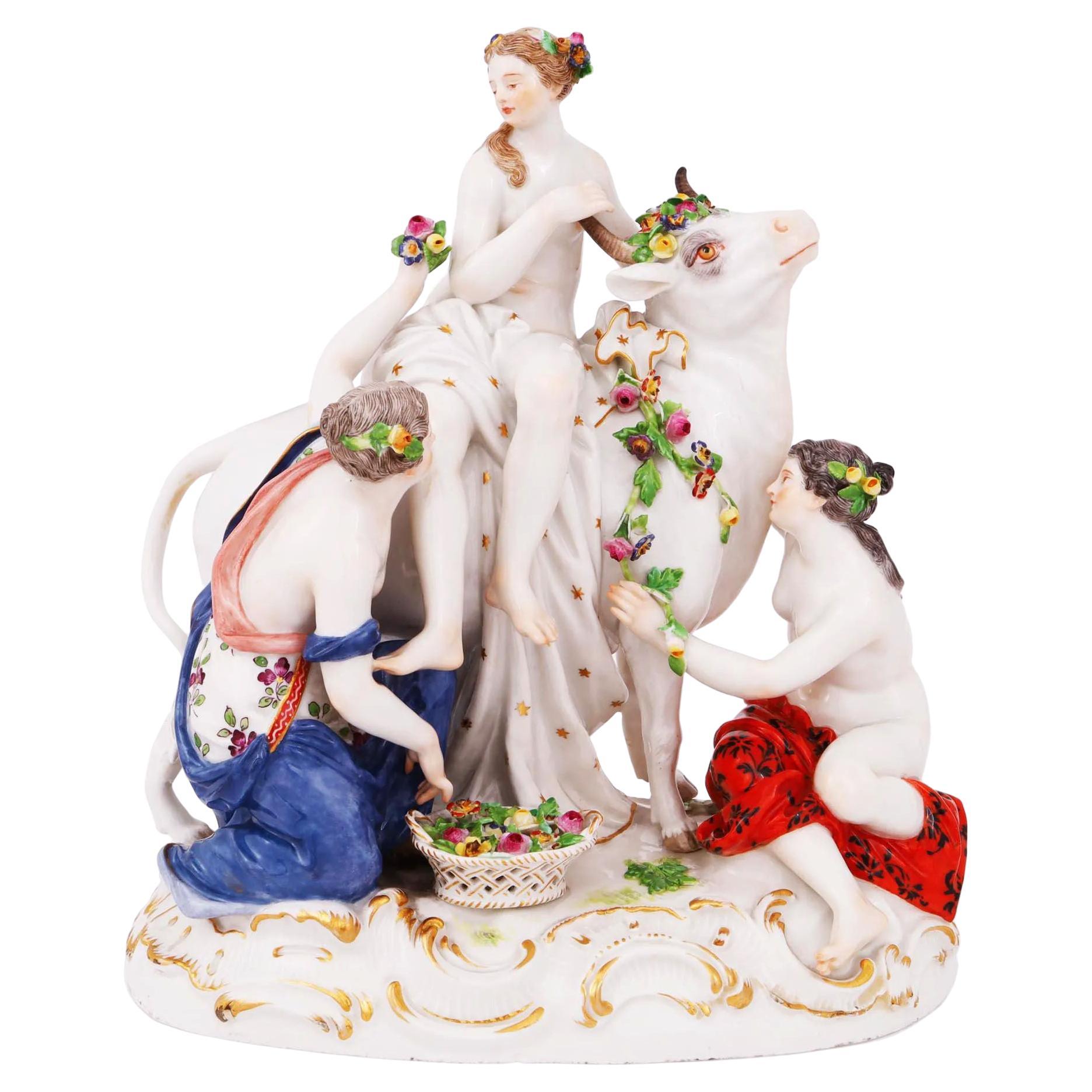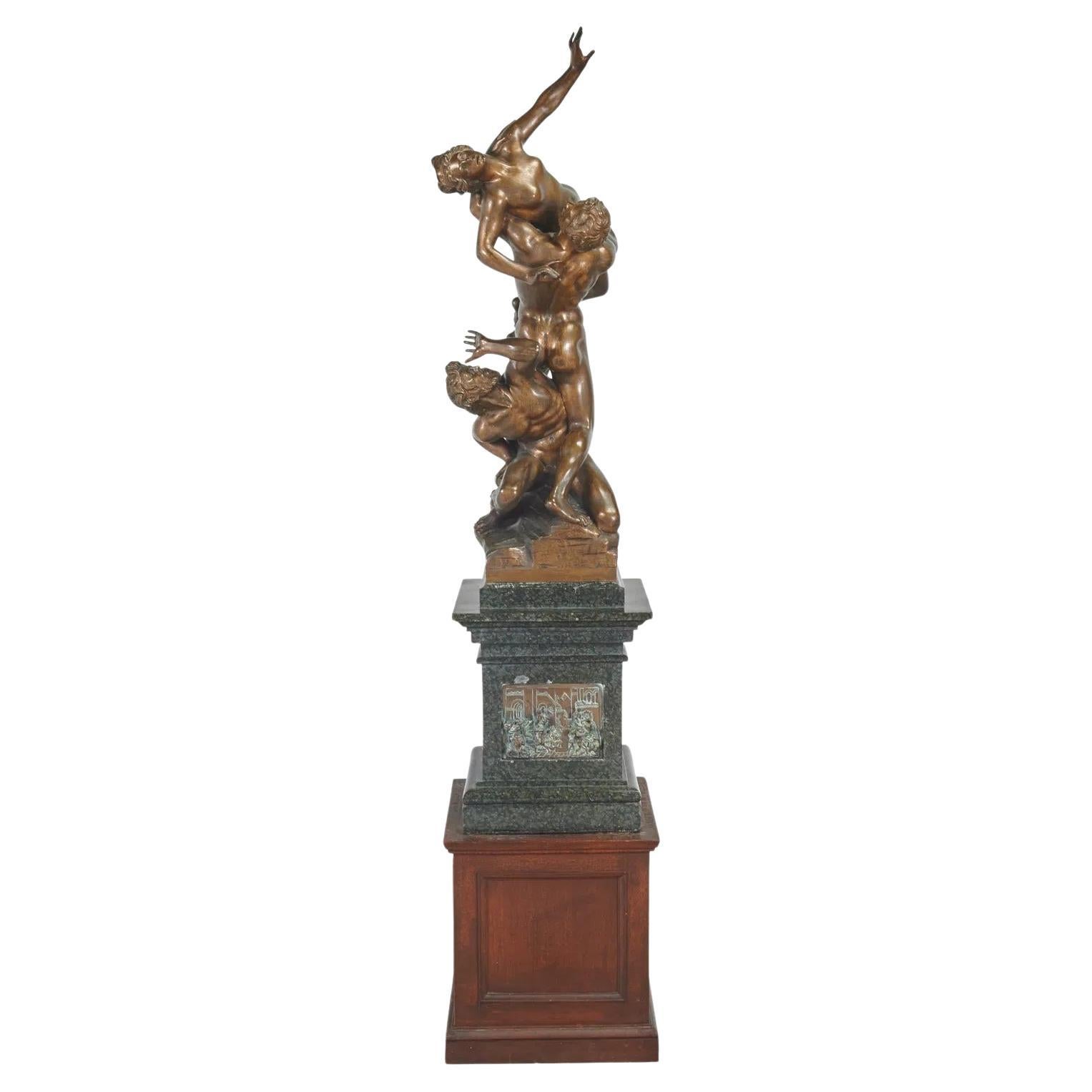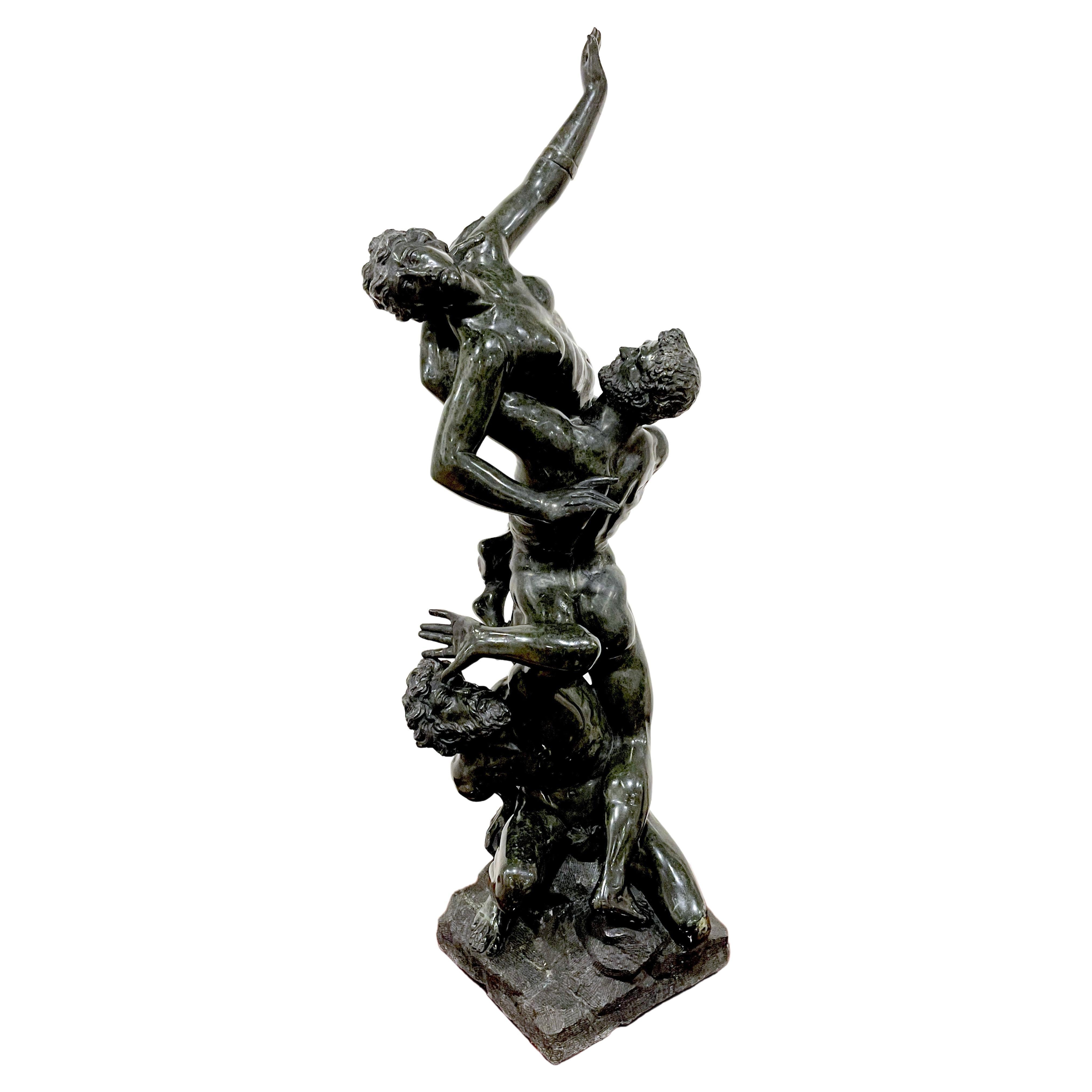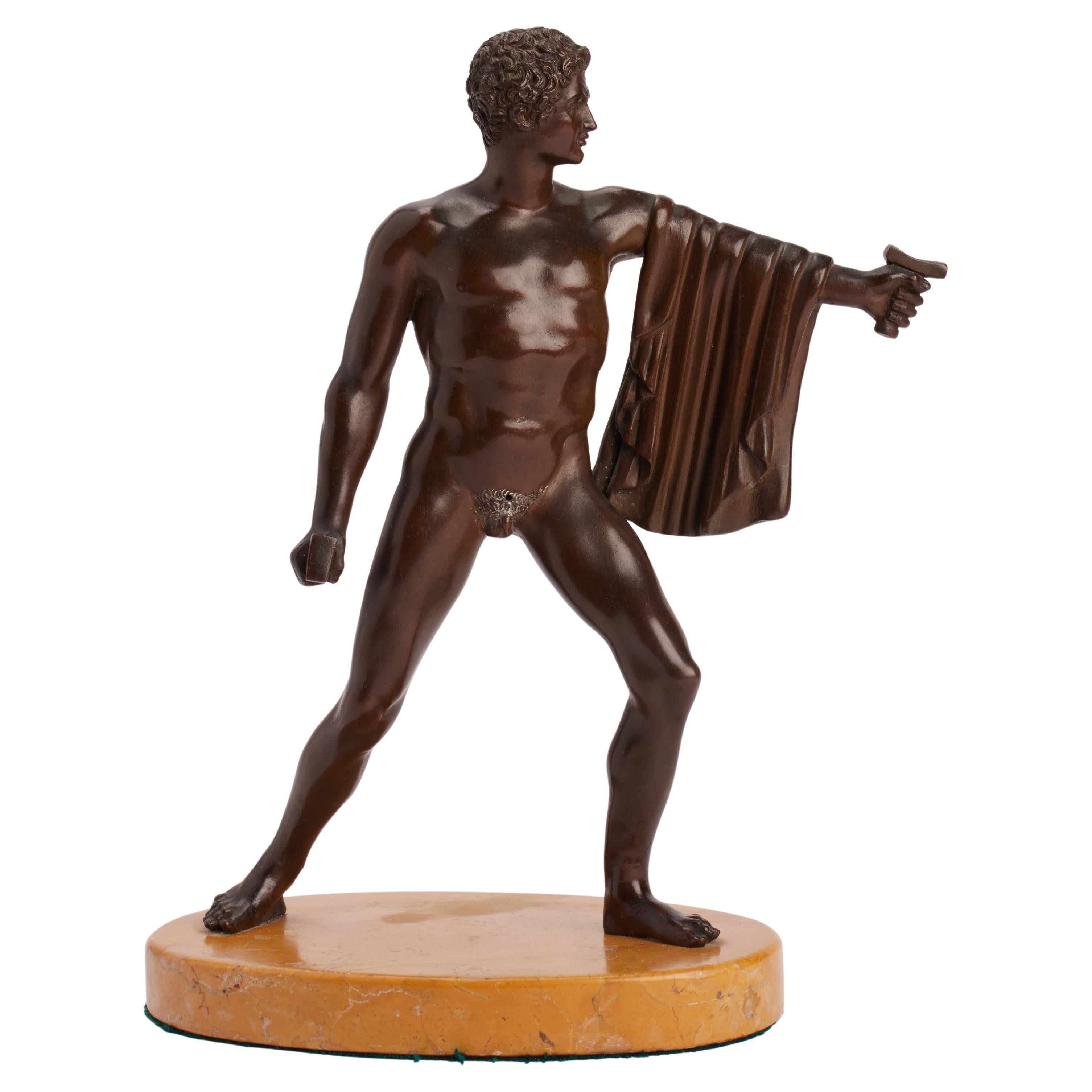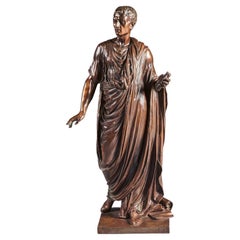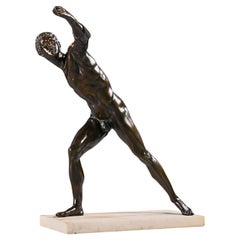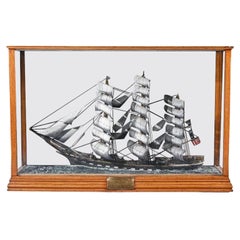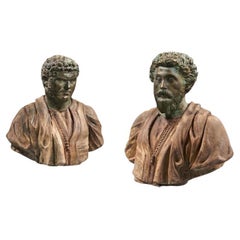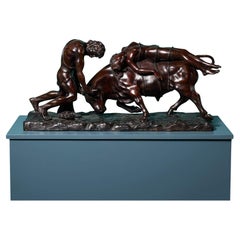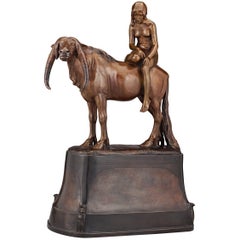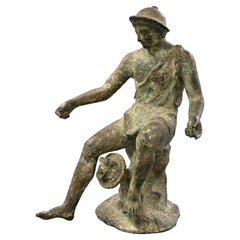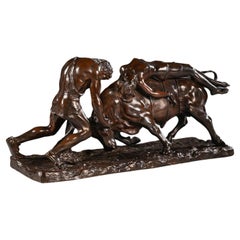
Grand Neapolitan Bronze Depicting the Abduction of Europa by Vincenzo Cinque
View Similar Items
Want more images or videos?
Request additional images or videos from the seller
1 of 14
Grand Neapolitan Bronze Depicting the Abduction of Europa by Vincenzo Cinque
About the Item
- Dimensions:Height: 16.5 in (41.91 cm)Width: 34.5 in (87.63 cm)Depth: 11 in (27.94 cm)
- Materials and Techniques:
- Place of Origin:
- Period:1900-1909
- Date of Manufacture:Circa 1900
- Condition:Wear consistent with age and use.
- Seller Location:Benington, GB
- Reference Number:Seller: 29541stDibs: LU1183237172782
About the Seller
5.0
Vetted Professional Seller
Every seller passes strict standards for authenticity and reliability
Established in 1969
1stDibs seller since 2015
124 sales on 1stDibs
Associations
LAPADA - The Association of Arts & Antiques DealersThe British Antique Dealers' Association
Authenticity Guarantee
In the unlikely event there’s an issue with an item’s authenticity, contact us within 1 year for a full refund. DetailsMoney-Back Guarantee
If your item is not as described, is damaged in transit, or does not arrive, contact us within 7 days for a full refund. Details24-Hour Cancellation
You have a 24-hour grace period in which to reconsider your purchase, with no questions asked.Vetted Professional Sellers
Our world-class sellers must adhere to strict standards for service and quality, maintaining the integrity of our listings.Price-Match Guarantee
If you find that a seller listed the same item for a lower price elsewhere, we’ll match it.Trusted Global Delivery
Our best-in-class carrier network provides specialized shipping options worldwide, including custom delivery.More From This Seller
View AllFine Bronze Figure of a Roman Orator Probably Julius Cesar by Mathurin Moreau.
By Mathurin Moreau
Located in Benington, Herts
An Elegant Patinated Bronze Figure of a Roman Orator probably Julius Cesar by Mathurin Moreau 1822-1912, Signed Moreau Math Exposition des Beaux 1...
Category
Antique 1870s French Figurative Sculptures
Materials
Bronze
19th Century French Borghese Gladiator Bronze of Large Scale
Located in Benington, Herts
A finely cast large scale bronze of the Borghese Gladiator with exceptional patina
French c.1830-50
Due to the particularly fine casting of our piece, it seems likely that it is ...
Category
Antique Mid-19th Century European Figurative Sculptures
Materials
Bronze
Large Oak and Glazed Cased Model of the Tea Clipper Glengarry in Full Sail
Located in Benington, Herts
An exceptional 19th century Model of the tea clipper ‘Glengarry’ in full sail, built by Royden & Sons Liverpool in an oak and glass display case.
English Circa 1868.
The Glengarry was a famous Tea Clipper ship...
Category
Antique 19th Century British Figurative Sculptures
Materials
Brass
$2,110 Sale Price
30% Off
Rare Pair of 19th Century Portrait Busts of Caesars Marcus Aurelius and Caracall
Located in Benington, Herts
Wonderful pair of 19th Century Roman Emperor Portrait Busts Representing Marcus Aurelius and Caracalla in Terracotta with Bronze Heads.
Italy Naples late 19th / early 20th Century.
Life-size busts, the heads cast in bronze with the body of terracotta, modelled with vest without sleeves and toga thrown over one shoulder.
Wonderful verdigris patination to the bronze and weathered to the terracotta.
Very unusual to have a bronze head coupled with a terracotta body these highly imposing decorative busts are of excellent quality. Depicting the Roman Caesars...
Category
Antique 19th Century Italian Busts
Materials
Bronze
A Fine Pair of Early 19th Century French Grand Tour Bronze & Siena Marble Tazzas
Located in Benington, Herts
A Fine Pair of Early 19th Century French Grand Tour Bronze and Siena Marble Tazzas of Interesting Design
French Circa 1830
These beautiful tazzas stand on round bronze bases, cast...
Category
Antique 1830s French Urns
Materials
Siena Marble, Bronze
Large Pair of Early 19th Century French Grand Tour Bronze and Siena Marble Tazza
Located in Benington, Herts
A Fine and Decorative Pair of French Grand Tour Bronze and Siena Marble Tazzas of Large Scale
French circa 1820
These fine tazzas retain an impressive patination and are of a well ...
Category
Antique 1820s French Urns
Materials
Marble, Bronze
You May Also Like
Large Bronze Sculpture of Vincenzo Cinque’s Abduction of Europa
Located in Wormelow, Herefordshire
A large antique bronze sculpture depicting the Abduction of Europa attributed to Vincenzo Cinque.
The large scale and intriguing subject paired with its dark patination makes this a...
Category
Early 20th Century European Neoclassical Figurative Sculptures
Materials
Metal, Bronze
Abduction of Europa by Hermann Haase-Ilsenburg
By Hermann Haase-Ilsenburg
Located in New Orleans, LA
A poignant work of extraordinary artistry, this bronze figure captures the mythical tale of Europa, the beautiful Phoenician princess who was kidnapped by the king of the Olympian go...
Category
20th Century German Art Nouveau Animal Sculptures
Materials
Bronze
Grand Tour Souvenir Bronze of the Neapolitan Fisherman
Located in Palm Springs, CA
A lovely bronze antique sculpture of a fisherman after the antique excavated in Naples in the early 19th century. These Grand Tour Souvenirs were extremely popular in the 19th and ea...
Category
Early 20th Century Italian Figurative Sculptures
Materials
Bronze
German Foundry NeoClassical Grand Tour Bronze of the Neapolitan Dancing Faun
Located in Palm Springs, CA
A lovely and well cast example of the Pompeian Dancing Faun. This grand tour bronze stands approx 12 inches tall on it’s marble base and is about half size of the original unearthed...
Category
Early 20th Century German Figurative Sculptures
Materials
Bronze
Alabaster Clock, "The abduction of Europa"
Located in Paris, FR
Rare alabaster clock representing "The abduction of Europa" by Zeus metamorphosed into a bull. Europa, dressed in an antique tunic revealing a breast, is ...
Category
Antique 1830s French Restauration Table Clocks and Desk Clocks
Materials
Alabaster, Bronze
Stanley Stangren, Abduction of Europa, Modernist Terracotta Sculpture, ca. 1950
By Stanley R. Stangren
Located in New York, NY
Dimensions
Total height: 12.5 inches
Width: 19 inches
Depth: 7.5 inches
Base height: 1.5 inches
DETAILS Unsigned, original wood base.
CONDITION Excellent vintage condition, wear consistent with age and use.
Stanley R. Stangren (American, 1928–2014) was an outstanding American jeweler, artist, sculptor and ceramist, residing in New York City. He worked in different styles and in different materials, including oils, watercolor, ceramic and stone sculptures; and fine jewelry. Stangren’s painting styles varied tremendously – from complete abstract works to Holocaust themes in the style of Georges Rouault and Hieronymus Bosch to portraits in the style of Moses and Raphael Soyer. He was also a passionate lover of the performing arts, and, as a young man, spent time studying dance at both the School of American Ballet and with Martha Graham.
Although he worked with dance pioneers like Ms. Graham, Anna Sokolow and Charles Weidman, an injury prevented him from pursuing dance as a career. But he found other outlets for his artistic pursuits. In his youth, Stangrem attended the Brooklyn Museum School of Art, and graduated from the High School of Music and Art in New York City. He later studied at the Boston Museum of Fine Arts, the Art Students League, Bard Colledge and in Europe.
Stangren studied jewelry design in Europe, attending Staatlische Kunst Werkschule in Pforzheim, Germany and Kunstgewerbeschule der Stadt in Zurich, Switzerland. His jewelry and designs were received with great success. His combination of precious and semi-precious stones, high-karat gold and sterling silver, and exotic materials executed with outstanding workmanship in the abstract modernist style gave a unique aspect to his designs, the metalwork usually electroformed, cast, or fused in varying textures. After returning to New York in the later 1950’s, Stangren opened and maintained a ceramic business in Trenton, New Jersey.
Very few pieces of his work remain from this period. When he retired from the ceramics business, he spent much of his time enjoying the arts. He frequently attended Juilliard performances, including most of the opera and drama presentations at the School, and was especially fond of the dance concerts. The last 40 years of his life, he taught painting in the New York area and worked with Metropolitan Museum of Arts in developing annuities, for future acquisitions.
In addition, Stangren left annuities for MoMa in support of educational programs and left, in his will or through his executors, art supplies for the Harlem School of Art and benefits for the Urban Assembly organization. Mr. Stangren's love for the arts and for the performances he was seeing at Juilliard inspired him to take his participation a step further and to establish charitable gift annuities with the School. "I realized what Juilliard offered me, being a passionate music lover, and I decided to give something back" he said.
"What Juilliard achieves is remarkable. When I think of the prominent actors, dancers and musicians that have been educated there, I am always staggered. It is deeply financially satisfying to be able to give back to the School, while benefitting from it at the same time." The Juilliard School is not the only organization that Stanley Stangren...
Category
Vintage 1950s American Mid-Century Modern Abstract Sculptures
Materials
Terracotta
Recently Viewed
View AllMore Ways To Browse
Lladro Lady
Lucite Female Torso
Male Marble Nude Wrestling
Man And Woman Chinese Figurines
Marathon Statue
Marc Boffin
Marcel-André Bouraine On Sale
Mathurin Moreau Spring
Medusa Rondanini
Meissen Fox
Mercurius Sculpture
Mermaid Figurehead
Michael Shacham
Mickey Mouse Ceramic
Midcentury Lucite Torsos
Mignon Model
Moorish Statues
Moser Kolomon
